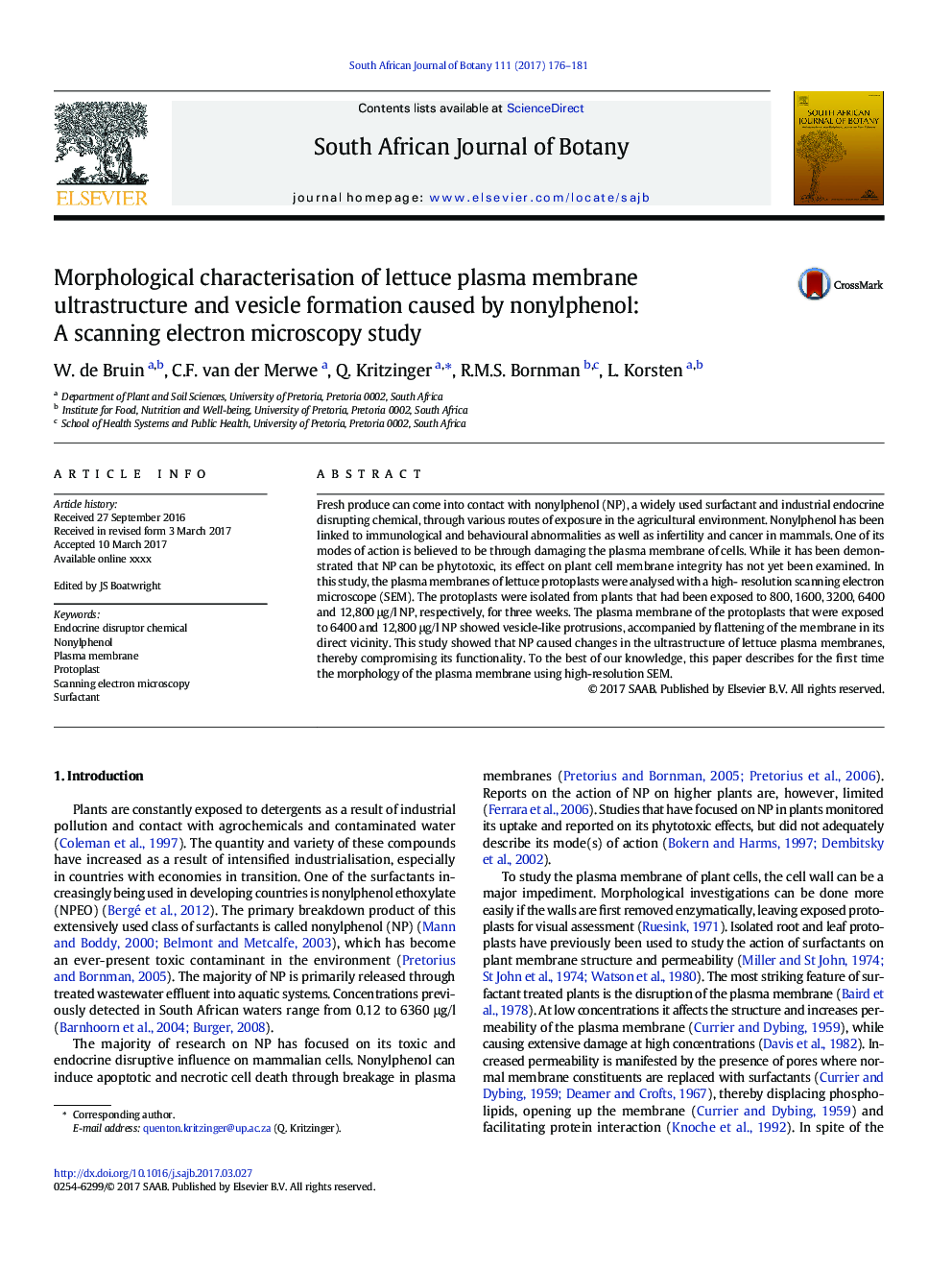| Article ID | Journal | Published Year | Pages | File Type |
|---|---|---|---|---|
| 5762958 | South African Journal of Botany | 2017 | 6 Pages |
Abstract
Fresh produce can come into contact with nonylphenol (NP), a widely used surfactant and industrial endocrine disrupting chemical, through various routes of exposure in the agricultural environment. Nonylphenol has been linked to immunological and behavioural abnormalities as well as infertility and cancer in mammals. One of its modes of action is believed to be through damaging the plasma membrane of cells. While it has been demonstrated that NP can be phytotoxic, its effect on plant cell membrane integrity has not yet been examined. In this study, the plasma membranes of lettuce protoplasts were analysed with a high- resolution scanning electron microscope (SEM). The protoplasts were isolated from plants that had been exposed to 800, 1600, 3200, 6400 and 12,800 μg/l NP, respectively, for three weeks. The plasma membrane of the protoplasts that were exposed to 6400 and 12,800 μg/l NP showed vesicle-like protrusions, accompanied by flattening of the membrane in its direct vicinity. This study showed that NP caused changes in the ultrastructure of lettuce plasma membranes, thereby compromising its functionality. To the best of our knowledge, this paper describes for the first time the morphology of the plasma membrane using high-resolution SEM.
Keywords
Related Topics
Life Sciences
Agricultural and Biological Sciences
Agronomy and Crop Science
Authors
W. de Bruin, C.F. van der Merwe, Q. Kritzinger, R.M.S. Bornman, L. Korsten,
